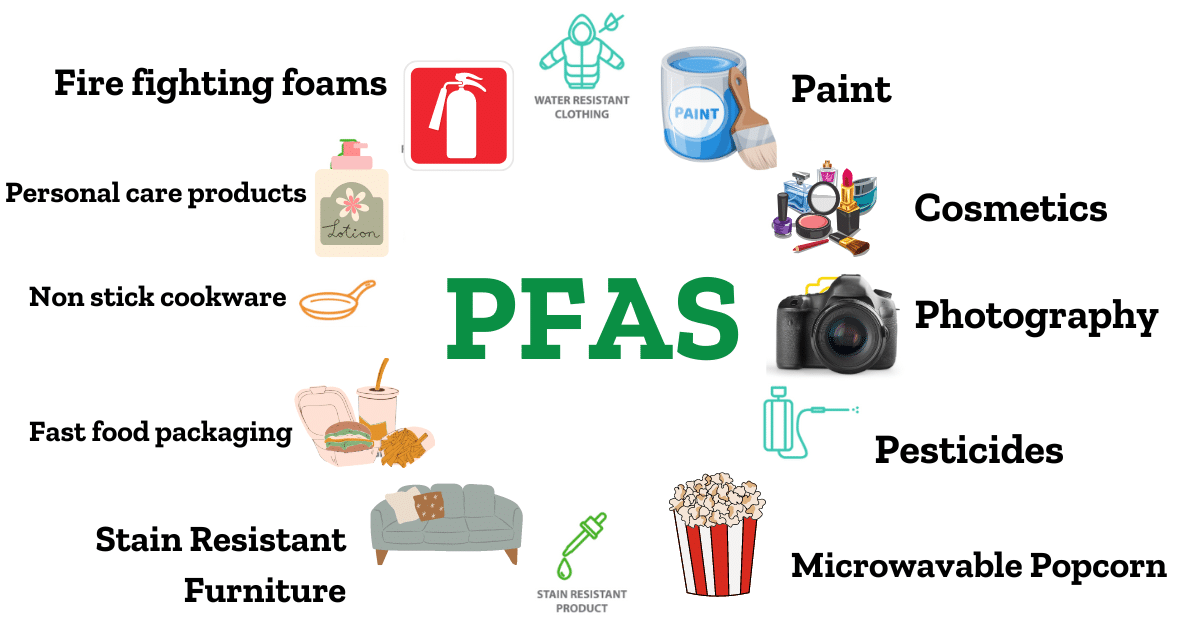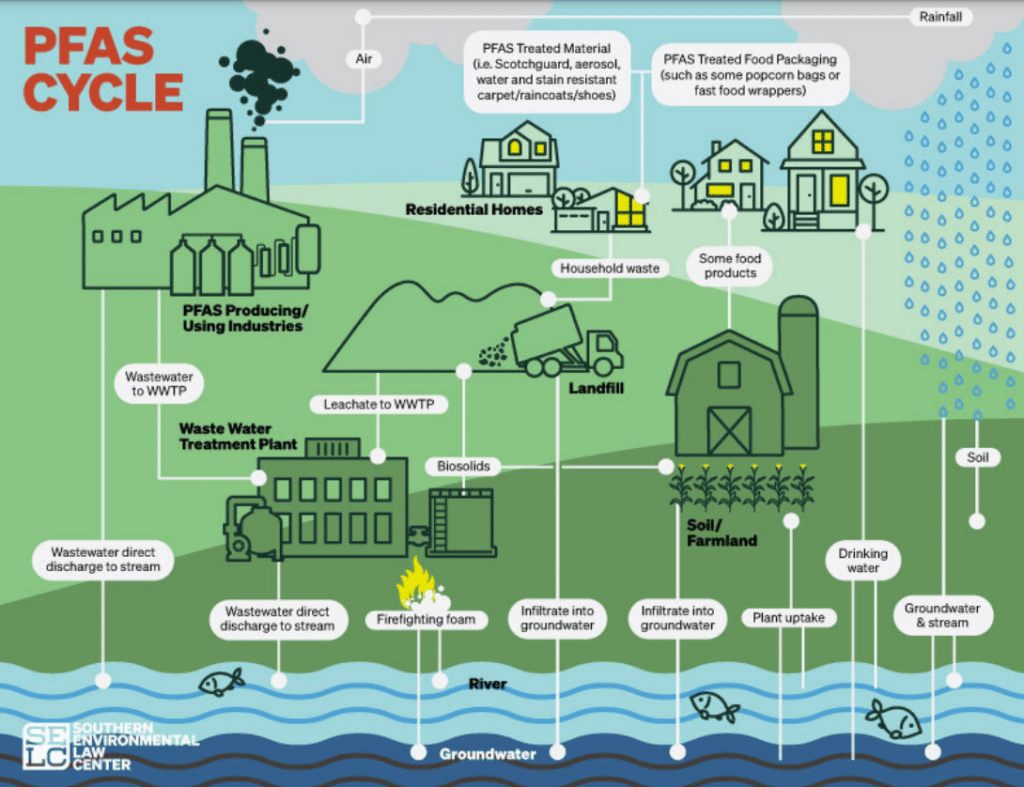
Stopping PFAS Pollution at its Source
Per- and polyfluoroalkyl substances (PFAS) – “forever chemicals” – threatens our health and our environment. Initial studies conducted by the Virginia Department of Health (VDH) and the Virginia Department of Environmental Quality (DEQ) have confirmed PFAS contamination in surface waters, groundwater, and drinking water throughout the state. To address this pollution and public health problem, Virginia should use existing authority under the federal Clean Water Act to require disclosure and control of the discharge of these chemicals into our waters.
Tune in to this podcast episode where Katie Keller interviews Conservation Director, David Sligh, and Conservation Policy Consultant, Jackie Goodrum. You may be surprised at how many household products are sources for PFAS exposure.
THE CHALLENGE
Commonly called “forever chemicals,” PFAS are a class of over 9,0003 synthetic chemicals that do not easily break down but instead build up and persist in our bodies, soil, water, and wildlife. PFAS, even at very low levels, can cause significant human health harms, including cancer, harm to fetal and infant development, and reduced immune function. The public can come into direct contact with PFAS via everyday items like waterproof and stain-resistant fabrics and materials, food packaging, and non-stick
cookware.
CONVENTIONAL WATER TREATMENT SYSTEMS DO NOT REMOVE PFAS FROM DRINKING WATER
Communities are at risk of significant exposure to PFAS from concentrated streams of these chemicals released into our environment in firefighting foams, industrial wastewater discharges, landfills, and land-applied sewage sludge biosolids.8 Importantly, conventional water treatment systems do not remove PFAS from drinking water or wastewater and PFAS discharges can contaminate drinking water, surface water, soil, crops, and forage. Studies have found that members of low-income communities and communities of color are more likely to live within five miles of a PFAS contaminated site and that these communities may be disproportionately exposed to PFAS in drinking water.
Unfortunately, Virginia does not require polluters to disclose or control these chemicals in their discharges or land-applied sewage sludge biosolids. This leaves downstream communities, private well owners, and farmers at risk or on the hook for costly cleanups. In Virginia, initial studies have found PFAS contamination in public drinking water supplies, private wells, near the Richmond International Airport, and near military bases. The full extent of PFAS contamination in Virginia is unknown due to limited funding available for testing and data management.
THE SOLUTION
Drinking water standards are an important component of protecting public health, but ultimately PFAS pollution must be stopped at its source. Using existing authority, the Commonwealth should identify and control pathways of PFAS pollution and put the responsibility on polluters—not communities—to clean up their waste. Specifically, the federal Clean Water Act as applied through Virginia’s Pollution Discharge Elimination System (VPDES) authorizes the Commonwealth to both monitor for and restrict discharges of PFAS into surface waters. States like North Carolina, Michigan, and Colorado are already using such authority to require industries to limit their PFAS discharge and help stop PFAS pollution at its source.

*This information was pulled from Virginia Conservation Network’s 2024 Common Agenda, representing the policy agenda of more than 160 organizations across the Commonwealth. This book provides an in-depth analysis of the conservation issues facing Virginia and provides practical, state-level policy solutions to keep us moving in the right direction. Wild Virginia is a yearly contributor to VCN’s policy recommendations. View the full document here.